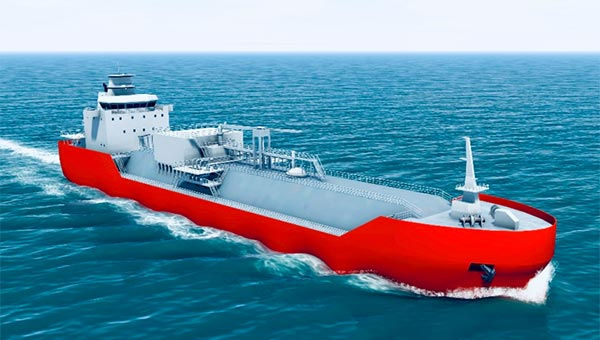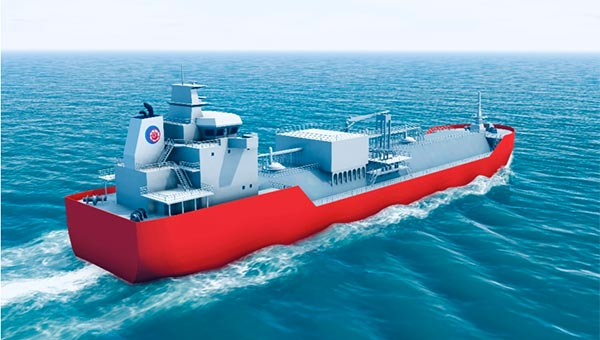MOL Coastal Shipping, a subsidiary of Japanese shipping major Mitsui O.S.K. Lines (MOL), has joined forces with compatriot tanker company Asahi Tanker and ship manager IKOUS on a concept study of a large coastal ammonia carrier.

As informed, the idea behind the project is to ensure the capability of using a single vessel to transport large quantities of ammonia, which has potential as a decarbonized energy source.
The concept study will pursue “hull form development” to cover the three needs of GHG reduction, versatility, and smooth cargo handling.
Under the agreement, MOL will provide technical assistance on labor saving and safety, while Asahi Tanker will share its knowledge in operating coastal tankers including the next-generation all-electric tanker.
On the other hand, IKOUS will provide insights in ship management for ammonia coastal vessels.

At this time, ammonia is currently mainly used as a raw material for fertilizers, and its shipping volume is limited, but, in light of the trend toward decarbonization, demand for ammonia is growing worldwide as a next-generation clean energy source that does not emit carbon dioxide during combustion.
A sharp increase in demand is also expected in Japan, where ammonia is transported secondarily by coastal shipping to electric power utilities and other consumers after being imported by ocean-going vessels.
Currently, ammonia is transported in coastal vessels with a capacity of about 1,000 cbm, but in view of the economic efficiency and the shortage of seafarers, which has recently become a challenge for the maritime industry, the introduction of large (10,000 cbm class) coastal ammonia carriers is considered an effective solution, according to MOL.
MOL, together with its partner Sasaki Shipbuilding, recently received an approval in principle (AiP) from Bureau Veritas (BV) for an ammonia (NH3) bunkering vessel design.
The Japanese shipping company and BV have been studying the potential of ammonia bunkering since 2022, creating a foundation for the AiP. Meanwhile, MOL also invited Sasaski to design the 12,000 cbm ammonia bunkering vessel based on BV’s rules.


